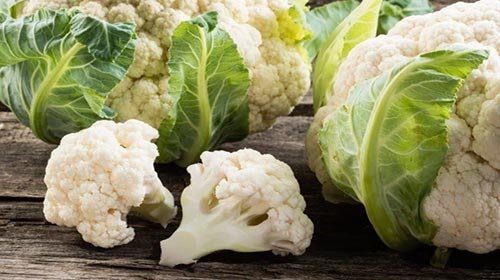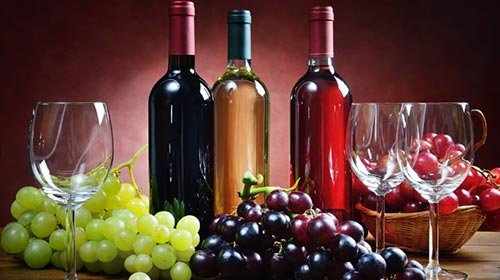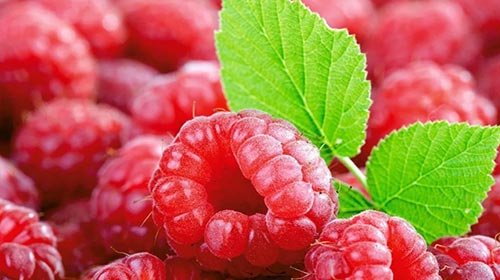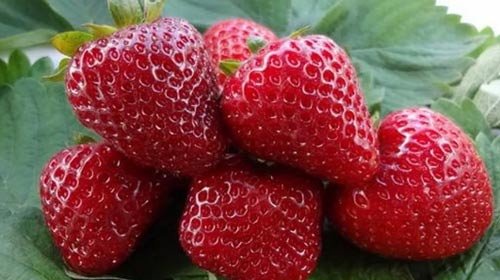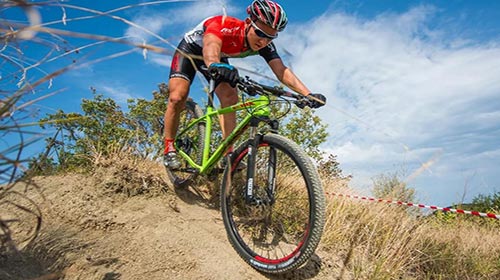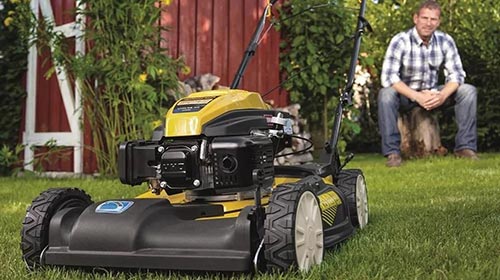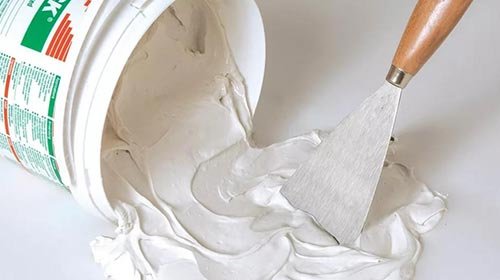A place |
Name |
Feature Rating |
| 1 | Northland | The best frost resistance |
| 2 | River | High yield |
| 3 | Spartan | Earliest variety |
| 4 | Duke | Late-flowering and frost-resistant |
| 5 | Eriblu | The easiest to care |
| 1 | Toro | The best large-fruited variety. Excellent taste |
| 2 | Northblue | Most hardy |
| 3 | Patriot | Resistant to late blight |
| 4 | Northcountry | It is not exacting to composition of soil |
| 5 | Polaris | High sugar content |
| 1 | Elizabeth | Best taste and aroma |
| 2 | Jersey | Great pollinator |
| 3 | Elliot | The best healing properties |
| 4 | Chandler | Suitable for industrial use. |
| 5 | Nelson | Ripens latest |
The number of people willing to feast on fragrant bright blue berries grows from year to year. A rare gardener does not dream of planting a beautiful deciduous shrub on his plot. The fruits of this plant are considered the most useful in many diseases of the genitourinary, cardiovascular, digestive systems of the body. Doctors recommend including them in the diet to reduce blood sugar levels. In the greenery of the shrub is a high content of tannins with anti-inflammatory properties.
North America is considered the birthplace of blueberries. Wild berry is found there everywhere. Through the efforts of breeders, more than one hundred varieties of this plant with different ripening periods have been bred. This helped to spread the shrub in different climatic zones, which was a real gift for gardeners. The plant is unpretentious in the care, resistant to many diseases. It is believed that blueberries are self-fertile, but experienced agronomists recommend planting different varieties in the neighborhood so that they enjoy greater yields. Before planting, you need to carefully examine the type of plant, choose the most suitable for growing in a particular climate. Most of them become long-lived and bear fruit for a dozen years. Below are the best varieties of blueberries, depending on the timing of ripeness of berries.
The best early varieties of blueberries
Gardeners always compete in the rate of harvest. Therefore, the varieties of early ripeness are considered the most popular. Fruits are usable fresh from the second decade of July.
5 Eriblu
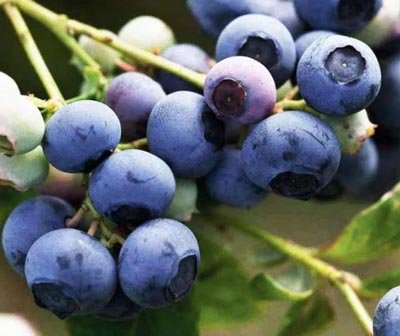
 The easiest to care
The easiest to care
Average price: 460 rub.
Rating (2019): 4.6
The plant is medium, its height is not more than 1.8 m. It was bred by US breeders more than 60 years ago and still remains for them the best early-growing species. On the bush is a small number of branches, which facilitates the care and collection of berries. Frequent pruning is not required. The fruit is a beautiful pale blue color with compacted flesh, an unusual taste and aroma. Fully matured are considered to be in the middle of summer, they do not fall down before this period. The plant withstands low temperatures, is not subject to diseases of fruit crops. Berries are consumed mostly fresh.
4 Duke

 Late-flowering and frost-resistant
Late-flowering and frost-resistant
Average price: 350 rub.
Rating (2019): 4.7
Unexpected frosts in late spring are characteristic of central Russia, from which many early-flowering plants suffer. Therefore, Duke is considered the best for this climate, as it blooms late, but fruiting does not suffer from this. Plant height reaches 1.8 m. From the beginning of flowering to the first harvest, no more than 45 days pass. Fruit variety - up to 8 kg of blueberry steadily from one bush. Fruits differ in the large size up to 2,5 cm in the diameter, a dense thin skin. It is used both fresh and frozen. According to gardeners, when cooled, the taste becomes richer.
3 Spartan
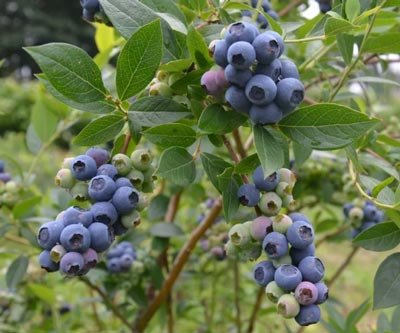
 Earliest variety
Earliest variety
Average price: 500 rub.
Rating (2019): 4.8
The plant reaches a height of 1.8 - 2.0 m. The leaves are shiny, dark green in color, which by the autumn acquire a bright orange color. The berries are round, dense, large, pale blue.Flowers look like tender bells, have a pronounced aroma. Bushes are often planted as decorative. Spartan is the earliest type of blueberry, you can enjoy its fruits from the beginning of July. Productivity reaches 6 kg. The variety has a good resistance to disease, perfectly transports transportation over long distances.
2 River

 High yield
High yield
Average price: 280 rub.
Rating (2019): 4.9
The shrub grows up to 2 m in height. It has a high growth rate, medium-sized berries with a dense skin that makes them suitable for long-term transportation. Variety Reka is one of the most productive, more than 10 kg of berries are harvested from one bush, and a record fee of 18 kg. The ripened fruits are on the plant for a long time. To maintain high productivity requires regular pruning. Fruits are slightly sour, consumed fresh and canned. It is resistant to diseases characteristic of fruit plants. According to reviews of gardeners near Moscow, the plant is well adapted to their climate, bears fruit for the third year. In the aggregate of qualities refers to commercial varieties of blueberries.
1 Northland

 The best frost resistance
The best frost resistance
Average price: 1 250 rub.
Rating (2019): 5.0
The plants are low, but branched, reach 1.2 m. They are used for decorating the site. The fruits are bright blue, sweet, full maturity reach in the second decade of July. Suitable for long-term storage and transportation. Productivity to 8 kg from a bush. The most important advantage is its frost resistance. Maintains temperature below 35 degrees. Due to this, it is popular in northern areas with extreme climates. The growing season is short. Used in fresh and canned form. Annual crown pruning helps to maintain high grade productivity.
The best mid-season varieties of blueberries
Plants of average terms of a maturity take the worthy place on garden sites. Ripen in the second half of summer, suitable for long-term storage and transportation over long distances.
5 Polaris

 High sugar content
High sugar content
Average price: 600 rub.
Rating (2019): 4.6
With a plant height of 1 m, the variety is famous for its high resistance to low temperatures. The shoots of the bush branch out strongly, directed upwards. To maintain an attractive appearance, regular crown formation is necessary. Climatic conditions change the time of ripening. With stable warm weather, the plant bears fruit earlier. In the suburbs and the Central region of the variety is considered mid-season. Berries with a high sugar content and a pleasant aroma. The plant needs peat fertilization.
4 Northcountry

 It is not exacting to composition of soil
It is not exacting to composition of soil
Average price: 500 rub.
Rating (2019): 4.7
A plant with a thick crown, low, reaches 90 cm. Blueberry Nortkurtri unusual sky-blue color with amazing sweet taste and attractive aroma. Small berries, up to 15 mm in diameter. Stable yields up to 3 kg, high winter hardiness made the variety favorite among gardeners of the northern climatic zones. Due to the beautiful foliage and berries, the plant is actively used as a living decorative hedge. From the beginning of flowering and harvesting takes a little time. It does not require special soil preparation before planting, it is easy to clean.
3 Patriot
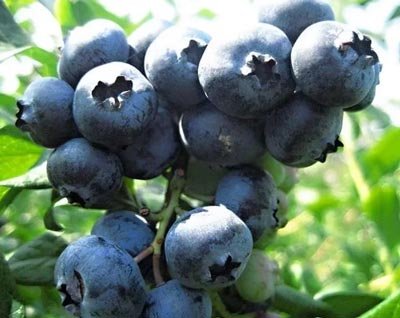
 Resistant to late blight
Resistant to late blight
Average price: 500 rub.
Rating (2019): 4.8
The rapidly growing berry bush reaches 2 m in height. The location of the branches is rare. Does not require frequent pruning. Differs in resistance to fungi, late blight. Full maturation is observed in the second half of July. The variety is frost-resistant, easily experiencing lower temperatures to -30 degrees, well suited for the Moscow region. Gardeners note the unusualness of large-sized berries, slightly flattened, with a barely noticeable scar and very pleasant to the taste. Berries to full ripeness are red, this property is used to decorate the garden. The plant is not demanding on the composition of the soil, which allows to expand its distribution.
2 Northblue

 Most hardy
Most hardy
Average price: 1 500 rub.
Rating (2019): 4.9
The plant is of medium ripeness, the first harvest is harvested in the first days of August. Fruits of medium size, saturated blue, suitable for long-term storage. Fruiting is stable, 3-3.5 kg from one bush. High frost resistance helps blueberries to take root in the middle lane in Siberia. The best varietal winter hardiness is also due to the low growth of the plant, which reaches a height of 60-120 cm. Northbly bravely withstands cold to minus 40 degrees.
1 Toro

 The best large-fruited variety. Excellent taste
The best large-fruited variety. Excellent taste
Average price: 1 500 rub.
Rating (2019): 5.0
The presence of Toro blueberry on the site guarantees a consistently high yield of large, juicy berries. Fruits are harvested several times in early August. The volume bush 2 m high, reaches in the diameter of 100 cm. The plant begins to fructify in the third year after landing. The variety is considered one of the high-yielding, the mass of berries during the growing season reaches 10 kg per plant. Excellent taste and aroma is inherent not only to fresh berries, but they remain after processing. Fruits are resistant to shattering and cracking. In cold climates, quite stable. Profitable from a commercial point of view.
The best late ripening varieties of blueberries
In horticulture, both highly-early and late-ripening plant species are equally valued. Eating blueberries in canned form is no less useful than fresh. Fruits of late ripening varieties are suitable for blanks in the form of jam, jelly, yogurt, retain nutritional properties when frozen. Ripen berries only with stable warm weather for a long time. Grown in the southern regions.
5 Nelson

 Ripens latest
Ripens latest
Average price: 400 rub.
Rating (2019): 4.6
Late ripeness is one of the advantages of the variety. This allows you to save the harvest and make high-quality harvesting for the winter. When the berry season ends in the garden, Nelson is just beginning to bear fruit for three weeks. The period of preparation of vitamins is extended. The yield of the plant reaches 8-9 kg. Active collection falls on the second half of August. The berries are large in size up to 20 mm in diameter, pale blue with a wine flavor. According to reviews of gardeners, it grows well in the conditions of the Central zone, the Black Earth, the North.
4 Chandler

 Suitable for industrial use.
Suitable for industrial use.
Average price: 300 rub.
Rating (2019): 4.7
One of the large-shrub bushes, the berries of which reach a diameter of 30 mm, and by weight 5 grams. Their dense clarified flesh has a pleasant sweetish taste. Fruiting occurs in the second half of August and early September. According to consumer reviews, you can collect 8 kg per season from a bush. Plant height 2 m, the crown is not sprawling. Calmly experiencing cold below 30 degrees. Berry ripening lasts 1-1.5 months, which allows the use of the Chandler variety with commercial benefits in the Moscow Region, Central District. Berries are suitable for hand picking.
3 Elliot

 The best healing properties
The best healing properties
Average price: 400 rub.
Rating (2019): 4.8
The plant is tall, reaches 2 m, grows straight up. Fruits are medium in size up to 15 mm in diameter, bright blue in color, with a slight touch of wax. Resistant to cracking, but can moderately crumble. The variety is unpretentious to irrigation and soil structure. In the rainy summer berries get spicy bitterness. It is considered a productive plant, the cumulative weight of fruits from a bush for a season reaches 6-9 kg. Elliot has a high content of anthocyanins in the composition, which provides therapeutic properties for inflammation of the gastrointestinal tract. No species of blueberry could change this ratio.
2 Jersey

 Great pollinator
Great pollinator
Average price: 1,050 rubles
Rating (2019): 4.9
The plant is derived a little less than a century ago. During this time, highly valued as the best pollinator. Reviews gardeners say that its cultivation is ideal next to the variety Blukrop.The jersey harvest ripens in the second decade of August. A large shrub with a spreading crown with a height of 2 m. Is experiencing great spring frost. Recommended for planting in the middle zone with a temperate climate. The berries are light blue with a pronounced taste. During the season, 6 kg of fruits are collected from one plant.
1 Elizabeth

 Best taste and aroma
Best taste and aroma
Average price: 1 300 rub.
Rating (2019): 5.0
Agronomists note the special attractiveness of the taste and aroma of the variety. Customer reviews fully confirm this. Sweet and large berries with a diameter up to 23 mm with dense pulp ripen in the first days of August. Due to the peculiarities of taste, they are ranked as dessert varieties. Vegetation period shortened. In appearance, the bush is classified as decorative, as the branches have a characteristic red tint. The plant is large in all respects - height is 2 m, diameter is more than 1 m. Productivity is within 4-7 kg. Collecting and transporting is simplified due to the easy tearing of fruits that do not deform. The plant is well experienced frost below 30 degrees.
